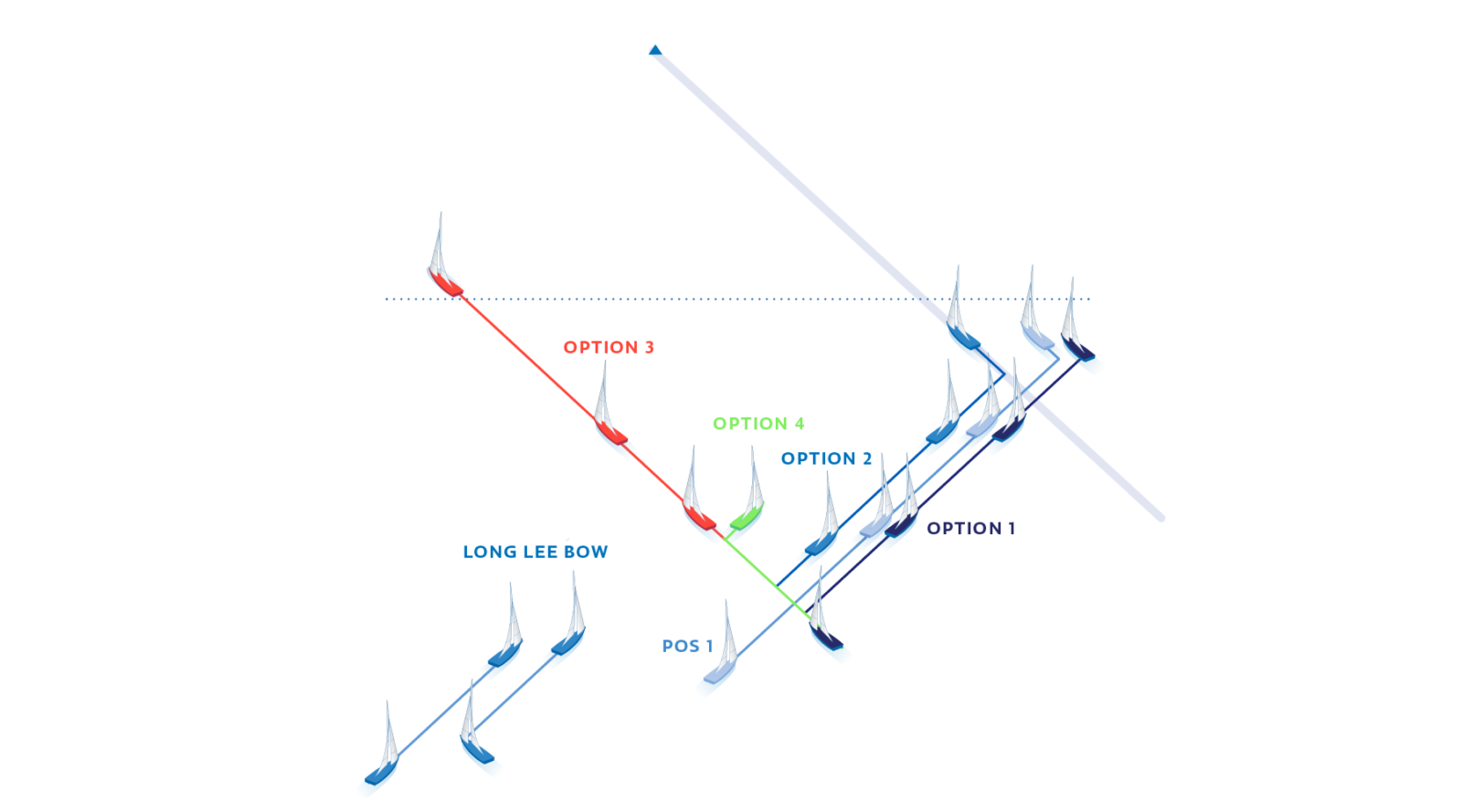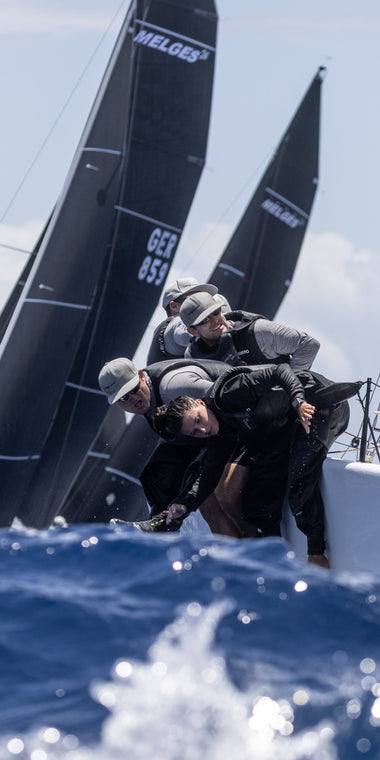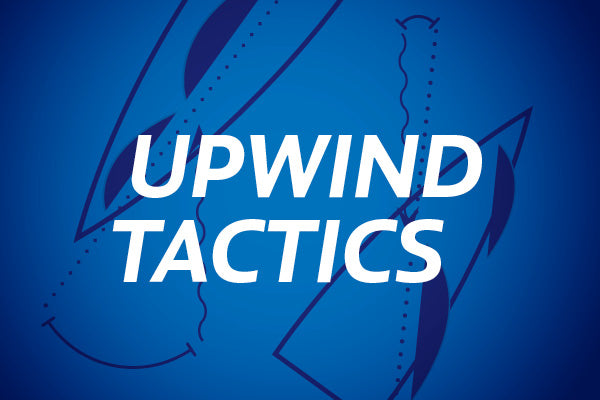UPWIND TACTICS: ONE ON ONE
UPWIND TACTICS: ONE ON ONE
By Bill Gladstone
In this installment North U Director Bill Gladstone explores upwind tactics against a single boat as you approach the starboard tack layline.
Consider this scenario: We’re on starboard tack about five lengths below the starboard tack layline and about to cross a port tack rival by a boat length. The mark is still a fair distance ahead. No other boats are a concern.
What’s the Goal? Our position – one length ahead and owing one tack – essentially puts us even. Our first goal is to round ahead; a more ambitious goal is to round a few boat lengths ahead. Rounding a length or two ahead is rounding “under pressure” (but still better than being behind). Rounding a few lengths ahead would allow us to “sail our own boat” downwind without fear of an immediate threat.
What should we do? There are 4 options: Lee-Bow, Cross & Tack, Carry-On on starboard, or a Delayed Tack after sailing a few lengths. Let’s explore them all.

Option 1: Lee-Bow
A Lee-Bow tack under the port tack boat would allow us to give them bad air but given the short distance to the layline this play could leave us pinned – unable to tack until our rival tacks. This move might actually leave us behind. There must be a better choice. Opt 1 – Lee Bow

NOTE: A Lee-Bow can be a great move IF if there’s enough distance that we will be able to push our rival back and be free to tack. In fact, this might be the first choice in that case. But not here; not with the short distance to the layline.
Option 2: Cross & Tack
We cross by a length and tack, leaving us to windward and bow to bow headed to the layline. With the Cross & Tack our rival is pinned and we get to make a safe layline call. We tack; our rival “hips up” and tacks; and we lead to the mark, rounding 1 to 2 lengths ahead. In the lead, but under pressure. If we were going to the finish, this would be just fine…
Opt 2 – Cross & Tack puts us in control and assures we’ll round ahead.
Option 3: Carry-On
Never mind the rival: Sail our boat. Rather than tack and make a long layline call let’s carry on. This is a passive approach that leaves us at the mercy of a small shift or puff. After we split and both boats tack we may hold our one boat length advantage, but we’ll be on port. Not strong…

Option 4: Delayed Tack
In this scenario we sail a few lengths – less than a “speed build”– and then tack.

Then what? Our rival will be bow out and first to the layline. When they tack on the layline we’ll tack on their lee-bow. Note that by extending less than a speed build before our tack we assure that our rival will not be back to full speed at our next meeting. Now we’ll be able to give them bad air all the way to the mark. In this way we’re able to turn a small advantage into a few boat lengths lead – hopefully enough so we won’t be “under pressure” but will be able to let us “sail our own boat” downwind.

That didn’t work out too well for our rival. What else could they do? An early tack would be a gift to us – as two extra tacks would hand us a comfortable lead. The other option would be to over-stand and wait for us to tack. That too is a gift, as each length they overstand gives us a length’s advantage (minus a small payback for their reaching angle after tacking).

Oops, NOT so fast…
Upon closer inspection I realized we were on the Yellow Boat, not the Red Boat. My bad. What to do?
When our rival executes a Delayed Tack we’re in a tough spot. Getting to the layline first leaves us two choices, neither good: tack on the layline and get crushed or over-stand and lose. How can we avoid the layline? As noted, two extra tacks is a gift to our rival. One option to explore is trading speed for height: Rather than race full speed to the layline we pinch up to close gauge with our rival.
How do we sail high and slow? Overtrim the main to force the boat up. Trim the jib a little too.
By sailing high rather than fast we can let them tack first, “hip up” and tack where we can stay close enough to put them “under pressure” when we round.

Summary:
So, for a short hitch to the layline a Delayed Tack pays big dividends. For a longer hitch the lee-bow tack would be a strong choice. Also, for a tack to the finish a “Cross & Tack” would be sufficient – at the finish, a lead is a lead.
And for the bow out boat a trade of speed for height is the best play. (And the windward boat should do the same. Don’t tell him.)
Next Time:
We’ll turn downwind: trailing, but with our rival “under pressure.” ‘til then, sail fast.



























